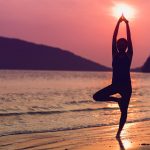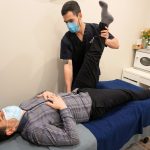Sun Salutations as an Alternative Fitness Method to Improve Health and Flexibility – Part 2
In our last post, we learned a little bit about the meditative, physiological, and psychological benefits of Sun Salutations. You will see the best results performing this routine every day, however it is still beneficial if you only do it a few times each week.
Give yourself the time to learn the correct form of each posture. During initial daily Sun salutation practice, you can breathe normally and as you master the technique you can focus on different breathing phases for each posture. Synchronize each step with the movement, breathe in as you arch your back and then out with the next movement and so on.
Sun Salutations can help you achieve optimum benefit with these 3- speed variations:
● Slow pace: Helps to improve your flexibility.
● Medium pace: Helps with muscle toning.
● Fast pace: Acts as an excellent cardiovascular workout and aids in weight loss.
One set of Sun salutations is completed by doing a full sequence of 12 postures. For someone who has never done Sun Salutations before, you should begin with 2 sets a day. On average an advanced practitioner performs 108 in one go, but for beginners it is not a good idea as the synchronization of breath and movements may go awry. 5 sets a day is a good number to achieve, you can progress to increase the number of sets as you build up regularity to this workout.
We are now going to go through the details on how to perform a 10 minute Sun Salutation routine. Sun Salutation consists of 7 postures (asanas) that are performed in a cyclic order creating 12 postures (asanas) in total. These are as follows:
- Prayer Pose (Pranamasana): Greeting the Sun in a prayer position while standing upright. Helps to relax and to calm the body and mind. Breathing: Normal, restful breathing.
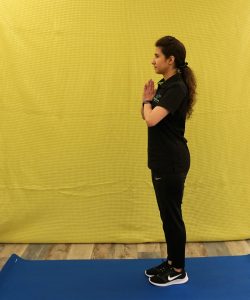
- Upward Salute (Hasta Uttanasana): Helps to stretch chest and abdomen and surges the energy flow towards the upper part of the body. Breathing: Inhale.
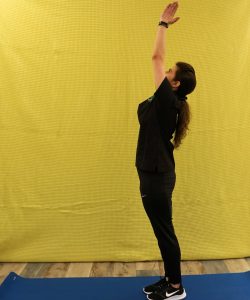
- Standing Forward Bend (Padahastasana): Stretches spine, massages abdominal organs, increases the power of digestion and blood flow to the brain. Helps regulate irregular menstrual cycles and hormonal imbalance. Breathing: Exhale.
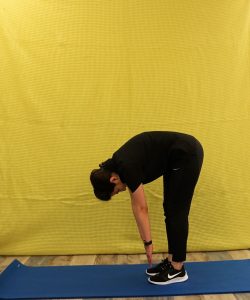
- Low lunge Right leg (Ashwa Sanchalanasana): Stretches the quadriceps, hip flexor muscles and spine, stimulates abdominal organs and increases mental power. Breathing: Inhale.
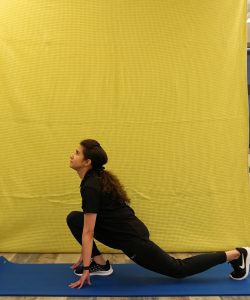
- Downward dog Pose (Parvatasana): Stretches calf and spine muscles, strengthens legs and arms, relieves varicose veins. Breathing: Exhale.
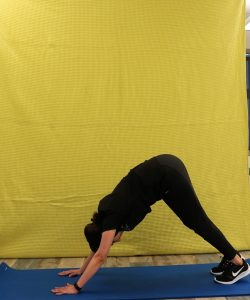
- Plank Pose (Dandasana): Improves posture, strengthens back muscles and spine, stretches shoulders and chest. Breathing: Normal, restful breathing.
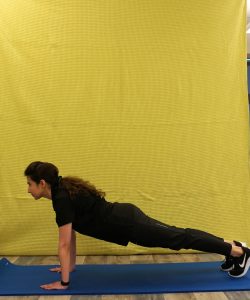
- Knee-Chest-Chin Pose (Ashtanga Namaskara): Helps in strengthening chest, arms and leg muscles. Breathing: Exhale.
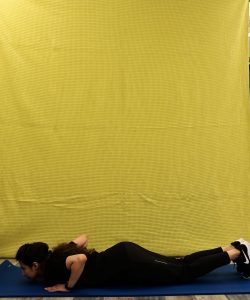
- Cobra Pose/ Upward dog (Bhujangasana): Relieves tension in back and spine, stimulates and expands chest and abdominal organs. Breathing: Inhale.
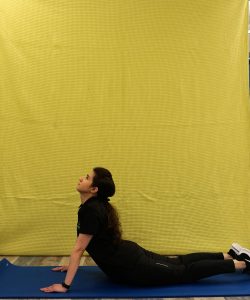
- Downward dog (Parvatasana): Continue the cyclic order, repeat parvatasana. Breathing: Exhale.

- Low lunge Left leg (Ashwa Sanchalanasana): Repeat by lunging with your left leg forward this time. Breathing: Inhale.
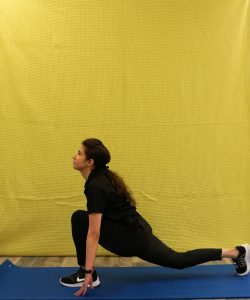
- Standing Forward Bend (Padahastasana): Repeat as described above for Padahastasana. Breathing: Exhale.

- Upward Salute (Hasta Uttanasana): Repeat as described above for Hasta Uttanasana. Breathing: Inhale.

The ideal time to perform Sun Salutations is during sunrise, the revitalising poses help refresh and awaken the mind, preparing you for the day ahead. But what if you miss Sun Salutations at the crack of dawn? Well, you don’t need to worry, this versatile exercise is equally beneficial whenever you wish to practice. If performed in the afternoon, it helps to energise a tired body and if done in the evening, it can help to unwind and relax in preparation to sleep.



